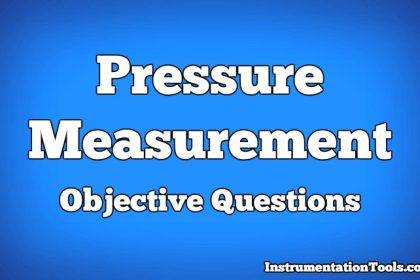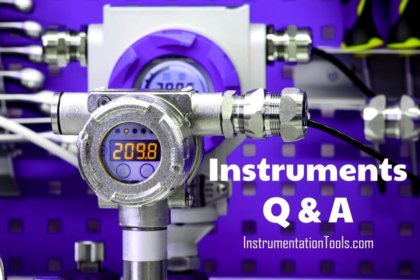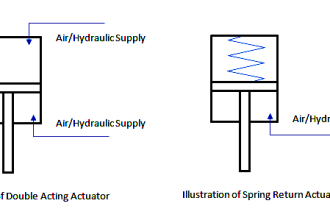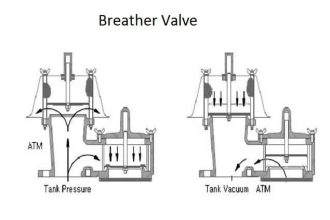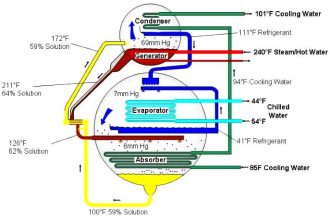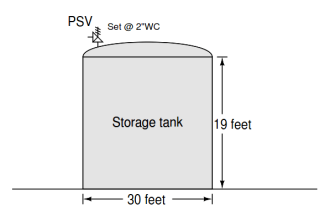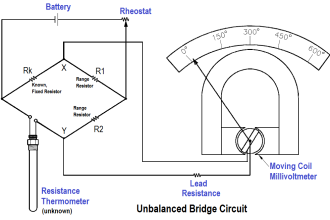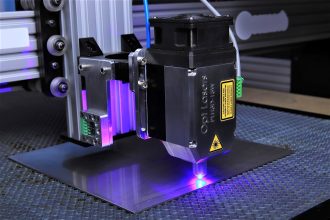Learn the questions and answers about proximity switches and answers for electrical and automation engineers.
Proximity Switch Questions and Answers
Follow the below video to understand the detailed explanations for the first 30 questions of the proximity switch.
Question 1
What is the primary function of a proximity switch?
A. To detect the presence of an object without contact
B. To measure electrical resistance
C. To detect the presence of an object with contact
D. To sense temperature variations
Show the Answer
To detect the presence of an object without contact
Question 2
How does a capacitive proximity switch detect an object?
A. By measuring the intensity of reflected light
B. By emitting and receiving ultrasonic waves
C. By detecting changes in electrical capacitance
D. By sensing vibrations caused by the object
Show the Answer
By detecting changes in electrical capacitance
Question 3
How do ultrasonic proximity switches detect objects?
A. By emitting and receiving sound waves
B. By measuring changes in capacitance
C. By sensing light reflection
D. By using magnetic fields
Show the Answer
By emitting and receiving sound waves
Question 4
How do photoelectric proximity switches use to detect objects?
A. Measuring changes in capacitance
B. Emitting and sensing ultrasonic waves
C. Generating a magnetic field
D. Reflecting or interrupting a light beam
Show the Answer
Reflecting or interrupting a light beam
Question 5
How does an inductive proximity switch operate?
A. By detecting changes in temperature
B. By using light reflection
C. By measuring changes in sound waves
D. By detecting magnetic fields from ferrous metals
Show the Answer
By detecting magnetic fields from ferrous metals
Question 6
How does a Hall effect proximity switch function?
A. By using light reflection
B. By detecting sound waves
C. By sensing magnetic fields
D. By measuring changes in capacitance
Show the Answer
By sensing magnetic fields
Question 7
Which of the following is a type of proximity switch?
A. Accelerometer proximity switch
B. All of the options
C. Strain gauge proximity switch
D. Capacitive proximity switch
Show the Answer
Capacitive proximity switch
Question 8
What is the main limitation of an inductive proximity switch?
A. Sensitivity to vibrations
B. High power consumption
C. Limited to detecting only metallic objects
D. Inaccuracy in high humidity
Show the Answer
Limited to detecting only metallic objects
Question 9
Which proximity switch is best for detecting non-metallic objects like plastic or glass?
A. Inductive proximity switch
B. Ultrasonic proximity switch
C. Capacitive proximity switch
D. Hall effect sensor
Show the Answer
Capacitive proximity switch
Question 10
What is a common application of Hall effect sensors in proximity switches?
A. Detecting changes in humidity
B. Sensing magnetic fields
C. Measuring temperature
D. Monitoring light levels
Show the Answer
Sensing magnetic fields
Question 11
What type of output signal do proximity switches typically provide?
A. millivolts
B. Digital pulse
C. Thermal signal
D. Optical signal
Show the Answer
Digital pulse
Question 12
Which factor does not typically affect the performance of a capacitive proximity switch?
A. Ambient light conditions
B. Size of the object
C. Material of the object
D. Distance from the object
Show the Answer
Ambient light conditions
Question 13
What is the advantage of using a proximity switch over a mechanical switch?
A. Higher power consumption
B. Requires physical contact
C. Limited sensing range
D. Greater durability and longevity
Show the Answer
Greater durability and longevity
Question 14
Which type of proximity switch is least affected by environmental contaminants like dust and dirt?
A. Capacitive proximity switch
B. Ultrasonic proximity switch
C. Inductive proximity switch
D. Optical proximity switch
Show the Answer
Inductive proximity switch
Question 15
What is a key benefit of using a photoelectric proximity switch?
A. Low cost and easy maintenance
B. High resistance to electromagnetic interference
C. Ability to detect objects at long distances
D. Inability to detect transparent objects
Show the Answer
Ability to detect objects at long distances
Question 16
What determines the sensing range of an inductive proximity switch?
A. The size and material of the target object
B. The shape of the target object
C. The presence of ambient light
D. The temperature of the environment
Show the Answer
The size and material of the target object
Question 17
Which proximity switch type can detect objects regardless of their color or transparency?
A. Photoelectric proximity switch
B. Ultrasonic proximity switch
C. Inductive proximity switch
D. Capacitive proximity switch
Show the Answer
Ultrasonic proximity switch
Question 18
In what application would you likely find a Hall effect sensor-based proximity switch?
A. Liquid level detection
B. Position sensing in robotics
C. Metal detection in recycling
D. Light intensity measurement
Show the Answer
Position sensing in robotics
Question 19
What is an example of a proximity switch that can detect both metallic and non-metallic objects?
A. Capacitive proximity switch
B. Hall effect sensor
C. Inductive proximity switch
D. Thermocouple
Show the Answer
Capacitive proximity switch
Question 20
Which type of proximity switch would be most suitable for detecting the fill level of a non-metallic liquid in a container?
A. Hall effect sensor
B. Inductive proximity switch
C. Capacitive proximity switch
D. Photoelectric proximity switch
Show the Answer
Capacitive proximity switch
Question 21
Which factor is not a consideration when selecting a proximity switch for an application?
A. Environmental conditions
B. Type of object to be detected
C. Communication protocol used
D. Required sensing range
Show the Answer
Communication protocol used
Question 22
What is a common disadvantage of photoelectric proximity switches?
A. Inability to detect fast-moving objects
B. Limited to detecting metallic objects
C. High sensitivity to ambient light
D. Poor accuracy at short distances
Show the Answer
High sensitivity to ambient light
Question 23
Which proximity switch type uses infrared light for detection?
A. Photoelectric proximity switch
B. Ultrasonic proximity switch
C. Capacitive proximity switch
D. Inductive proximity switch
Show the Answer
Photoelectric proximity switch
Question 24
How does a photoelectric proximity switch differ from an inductive proximity switch?
A. Uses light to detect objects
B. Uses sound waves instead of light
C. Requires physical contact to operate
D. Detects only non-metallic objects
Show the Answer
Uses light to detect objects
Question 25
What is an advantage of capacitive proximity switches over inductive ones?
A. Lower power consumption
B. Ability to detect non-metallic objects
C. Longer sensing range for metallic objects
D. Higher resistance to electromagnetic interference
Show the Answer
Ability to detect non-metallic objects
Question 26
Why are inductive proximity switches often used in industrial environments?
A. Ability to detect both metallic and non-metallic objects
B. High resistance to contaminants
C. Low cost and maintenance
D. Long sensing range
Show the Answer
High resistance to contaminants
Question 27
In what scenario would a capacitive proximity switch be less effective?
A. Sensing metallic objects
B. Detecting transparent glass
C. Monitoring liquid levels
D. Detecting plastic containers
Show the Answer
Sensing metallic objects
Question 28
How can ambient light affect a photoelectric proximity switch?
A. Reduces sensitivity to metallic objects
B. Enhances detection range
C. Causes false detections
D. Increases power consumption
Show the Answer
Causes false detections
Question 29
Which type of proximity switch is best suited for detecting fast-moving objects?
A. Capacitive proximity switch
B. Inductive proximity switch
C. Photoelectric proximity switch
D. Ultrasonic proximity switch
Show the Answer
Photoelectric proximity switch
Question 30
Which type of proximity switch is most effective for detecting objects in dark or poorly lit environments?
A. Ultrasonic proximity switch
B. Capacitive proximity switch
C. Photoelectric proximity switch
D. Inductive proximity switch
Show the Answer
Inductive proximity switch
Proximity Sensor Questions and Answers
In the below video, you will get detailed explanations for the following proximity sensor questions.
Question 31
Why are inductive proximity switches not suitable for detecting plastic objects?
A. Affected by ambient light
B. High power consumption
C. Limited detection range
D. Rely on magnetic fields
Show the Answer
Rely on magnetic fields
Question 32
What is a common use case for a photoelectric proximity switch in industrial automation?
A. Counting items on a conveyor belt
B. Sensing temperature changes
C. Measuring flow rate from a tank
D. Controlling the position of a robot arm
Show the Answer
Counting items on a conveyor belt
Question 33
Which proximity switch type would be least affected by surface irregularities of the detected object?
A. Inductive proximity switch
B. Photoelectric proximity switch
C. Capacitive proximity switch
D. Ultrasonic proximity switch
Show the Answer
Ultrasonic proximity switch
Question 34
What is a significant drawback of capacitive proximity switches in industrial environments?
A. Inability to detect small objects
B. Susceptibility to dust and moisture
C. High sensitivity to metallic objects
D. Poor response time
Show the Answer
Susceptibility to dust and moisture
Question 35
Which proximity switch type is ideal for detecting transparent objects such as glass?
A. Inductive proximity switch
B. Photoelectric proximity switch
C. Hall effect sensor
D. Ultrasonic proximity switch
Show the Answer
Photoelectric proximity switch
Question 36
What type of signal do inductive proximity switches typically output?
A. Variable resistance signal
B. Variable capacitance signal
C. Digital on/off signal
D. Variable inductance signal
Show the Answer
Digital on/off signal
Question 37
Which feature of photoelectric proximity switches allows them to detect objects at long distances?
A. Emission of ultrasonic waves
B. Use of magnetic fields
C. Reflection or interruption of light beams
D. Measurement of capacitance changes
Show the Answer
Reflection or interruption of light beams
Question 38
What is a significant advantage of using Hall effect sensors in proximity switches?
A. Low manufacturing cost
B. High accuracy at short distances
C. Resistance to water and dust
D. Ability to detect magnetic fields
Show the Answer
Ability to detect magnetic fields
Question 39
Which proximity switch type can be adversely affected by high levels of electromagnetic interference?
A. Ultrasonic proximity switch
B. Inductive proximity switch
C. Photoelectric proximity switch
D. Capacitive proximity switch
Show the Answer
Capacitive proximity switch
Question 40
Why are inductive proximity switches preferred for detecting metal parts in manufacturing?
A. High accuracy in detecting metallic objects
B. Long detection range
C. Ability to detect transparent objects
D. Low cost
Show the Answer
High accuracy in detecting metallic objects
Question 41
Which specification is critical when choosing a proximity switch for detecting very small objects?
A. Response time
B. Housing material
C. Power supply voltage
D. Cable length
Show the Answer
Response time
Question 42
Why is the sensing range an important specification for proximity switches?
A. It defines the minimum distance at which the switch can detect an object
B. It determines the switch’s power consumption
C. It affects the switch’s response time
D. It defines the maximum distance at which the switch can detect an object
Show the Answer
It defines the maximum distance at which the switch can detect an object
Question 43
When selecting a proximity switch for an explosive environment, what certification should be checked?
A. IP rating
B. RoHS compliance
C. ATEX certification
D. ISO 9001
Show the Answer
ATEX certification
Question 44
Which factor is least important when selecting a proximity switch for a standard indoor application?
A. IP rating
B. Response time
C. Sensing range
D. Color of the switch
Show the Answer
Color of the switch
Question 45
What does the IP rating of a proximity switch indicate?
A. Environmental protection level
B. Sensitivity to metal objects
C. Response time
D. Power consumption
Show the Answer
Environmental protection level
Question 46
Why is it important to consider the power supply voltage of a proximity switch?
A. It influences the housing material
B. It determines the compatibility with the control system
C. It determines the signal amplification factor
D. It affects the detection range
Show the Answer
It determines the compatibility with the control system
Question 47
Which specification is vital for ensuring a proximity switch can handle outdoor installations?
A. Power consumption
B. IP rating
C. Response time
D. Temperature tolerance
Show the Answer
IP rating
Question 48
What factor should be considered to ensure a proximity switch can withstand mechanical impacts?
A. Power supply voltage
B. IP rating
C. Housing material
D. Response time
Show the Answer
Housing material
Question 49
Why is the switching frequency specification important for proximity switches in high-speed applications?
A. It defines the average number of operations per second
B. It influences housing durability
C. It defines the maximum number of operations per second
D. It determines power consumption
Show the Answer
It defines the maximum number of operations per second
Question 50
What does the term “hysteresis” refer to proximity switches?
A. The delay in switch activation
B. The addition between the activation and deactivation points
C. The difference between the activation and deactivation points
D. The power consumption during operation
Show the Answer
The difference between the activation and deactivation points
Question 51
What is the benefit of an IP67-rated proximity switch in industrial applications?
A. Resistance to high voltage
B. Ability to detect transparent objects
C. Protection against dust and temporary immersion in water
D. Immunity to electromagnetic interference
Show the Answer
Protection against dust and temporary immersion in water
Question 52
Why is response time an important specification for proximity switches in dynamic applications?
A. It ensures slow detection of fast-moving objects
B. It influences the housing material
C. It determines power consumption
D. It ensures timely detection of fast-moving objects
Show the Answer
It ensures timely detection of fast-moving objects
Question 53
What is a key consideration for proximity switches used in hazardous locations?
A. Certification for explosion-proof standards
B. Housing material
C. Operating temperature range
D. Power consumption
Show the Answer
Certification for explosion-proof standards
Question 54
Which specification indicates a proximity switch’s ability to withstand immersion in water?
A. Response time
B. Operating temperature
C. IP rating
D. Switching frequency
Show the Answer
IP rating
Question 55
What should be considered when selecting a proximity switch for detecting objects in a vacuum environment?
A. Response time
B. Sensing range
C. Material compatibility
D. Power consumption
Show the Answer
Material compatibility
Question 56
Which proximity switch is ideal for detecting the level of granular materials in a silo?
A. Hall effect sensor
B. Ultrasonic proximity switch
C. Photoelectric proximity switch
D. Inductive proximity switch
Show the Answer
Ultrasonic proximity switch
Question 57
Why is it important to consider the mounting configuration of a proximity switch?
A. It affects the IP rating
B. It influences the power supply voltage
C. It ensures proper alignment and detection accuracy
D. It determines the response time
Show the Answer
It ensures proper alignment and detection accuracy
Question 58
Which factor is crucial for ensuring the longevity of proximity switches in heavy-duty applications?
A. Switching frequency
B. Response time
C. IP rating
D. Power supply voltage
Show the Answer
IP rating
Question 59
How does the hysteresis specification impact the performance of proximity switches in fluctuating environments?
A. It prevents rapid switching on and off
B. It reduces power consumption
C. It enhances temperature resistance
D. It increases detection range
Show the Answer
It prevents rapid switching on and off
Question 60
What is the advantage of a proximity switch with a programmable output?
A. Ability to customize switching behavior
B. Fixed detection parameters
C. Increased size and complexity
D. Reduced installation flexibility
Show the Answer
Ability to customize switching behavior
Question 61
Why is the material of the sensing face important in proximity switches?
A. It influences the detection range
B. It affects power consumption
C. It ensures compatibility with detected materials
D. It determines the response time
Show the Answer
It ensures compatibility with detected materials
Question 62
What does a high mean time between failures (MTBF) indicate for a proximity switch?
A. High power consumption
B. Short response time
C. Long operational lifespan
D. Low reliability
Show the Answer
Long operational lifespan
Read Next:
- Proximity Switch Working Animation
- Proximity switches Circuit Operation
- What is an Inductive Proximity Switch?
- Cylinder Control Using Proximity Sensor
- Magnetic Proximity Detector Principle


